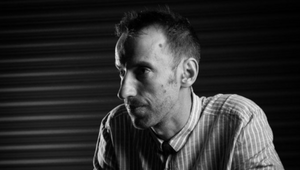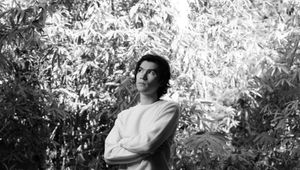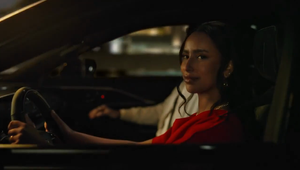
From DIY Roots to Helicopter Shoots with Jeremy Pettit

Jeremy Pettit, now a director at Santa Monica-based production company Porch House, began his filmmaking journey in the shadows of the British Columbian mountains, documenting the local skate and snowboarding scenes. After wearing out other filmmakers’ tapes, studying the craft, he bought his own hi-8 camera and started to teach himself.
“Documenting your crew and finding little real life moments that were entertaining to go along with the tricks, then editing it all together… that sort of became my foundation,” he says, speaking with LBB’s Ben Conway.
Enjoying the DIY aspect of BC’s extreme sports, Jeremy used it as his film school, figuring out the process from pre-production to marketing and distribution. This independence and the challenges posed by the great outdoors left the young director with a can-do attitude and unrelenting perseverance - an ethos he still carries today.
“Danger or doing things cowboy-style was always part of the puzzle. Gear got put through the ringer! Sleepless nights editing. You just figured it out to make the end result as good as you possibly could.”

This cowboy-creativity in the streets and snow also helped Jeremy become as comfortable in the edit suite as he is behind the camera. His energetic, rhythmic style - often cutting to music - comes from years within the action sports genre, and only developed further once he progressed to documentary (and later, commercial) work that would then blend story moments with these action sequences. “It came naturally to keep the pace of those edits feeling very rhythmic,” he says. “And now it's just condensed into 30-60 second spots.”
After a few years of shooting on video, Jeremy bought a 16mm Bolex camera and, on the advice of filmmaker and close friend Greg Hunt, took a black and white photography course at Vancouver’s Emily Carr University of Art + Design to study the fundamentals of film and lighting.
“That really helped my cinematography as I got more serious about it,” he says, “and it also just kept me fired up on my personal photography - which I still love doing today. So that was great advice!”

His career was then catalysed by an original series he directed for Red Bull, titled ‘Blueprint’. Serving as a transition from the pure action-focused projects he had been doing into more story-heavy work, he says it was “like a crash course in developing and producing little stories”. From there, he started doing more branded content work which led to commercials and everything he works on today.
Jeremy’s filmmaking nowadays requires great preparation, especially as top athletes can often only offer a few hours of their time to shoot. His recent Toyota spots, for example, marry together scenic outdoor photography with a compelling, heartfelt narrative of a winter Olympian. This meant he had to interview the talent well in advance to comprehensively script out the narrative and prepare for shooting.
“From those pre-interviews I can build out the story and shot lists, and then we usually do a scout day to dial that list in even more. Then once that plan is in place you can freestyle a bit and capture moments as they unfold, but the plan is the backbone of our day. And the scenic backdrops seem to come naturally as these winter athletes live and ride in beautiful environments!”
While picturesque, this beautiful, mountainous terrain does provide its challenges - something Jeremy experienced while shooting with an ultra-stable Cineflex camera from a helicopter in the Swiss Alps. “We started rehearsing a specific shot which required timing a dolly zoom on our three subjects as they dropped into a first descent. This had to happen as the helicopter came up and over the ridge from behind the riders so that we revealed the run just as they dropped in, and then followed them down the mountain from behind.”

After several rehearsals of the wild flight path, the camera operator - staring at the monitor under a black sheet - began to feel woozy, demanding that they make an emergency stop at the nearby sky resort. To Jeremy’s surprise, they landed in the middle of an open ski run just in the nick of time.
“I couldn’t believe it was happening. Skiers and snowboarders were riding past our parked helicopter as our camera operator puked his guts out on the run. Blades slowly spinning. Then, we loaded back up and ripped back to our talent and got the shot!”
Despite his outdoorsy focus, Jeremy admits that he’s “not a super technical person”, and is much more interested in finding a relatable story than using a crazy, parallaxing helicopter shot that might make the cameraman ill. “With bigger budgets you can work with better and more efficient tools and so I’m always excited to do that if it serves the story,” he says, “but without a good little story or concept, it's just fluff to me.”
He continues, “I like to play in reality and authentic worlds. I tend to gravitate towards stories with some heart and moments of emotional connection - even with sports spots it’s nice to always have some human connection.” An example of this is Jeremy’s film for athletic apparel company Eastbay called ‘Window not a wall’, featuring Olympic Gold medallist Helen Maroulis.
Telling the story of how Helen overcame a traumatic brain injury, which she suffered shortly after winning at the Olympics, Jeremy says he had to tap into all of his experience to capture the emotional elements alongside some really cool wrestling sequences.
But emotional or not, each action-packed job has its own unique demands. This makes his crew selection one of the most vital aspects of his job - especially when working in the mountains. “The camera department [needs] DPs and ACs that are comfortable working in extreme weather or trudging around in snow. 1st ACs pulling focus while snowboarding behind the DP (who’s also snowboarding) is one example of how important the right crew can be!”
With 2024 set to bring Jeremy some more secret (and potentially snowy) projects, plenty of quality time with his son, and hopefully some opportunities to catch a few waves, the director always finds himself coming back to the same piece of evergreen advice: “Follow your instincts and listen to those little gut feelings and creative intuitions.”
Encouraging other filmmakers to keep pushing for that one last shot that they feel is crucial - inevitably, these are the ones you wish you had in the editing room - he emphasises the importance of working on projects that you’re passionate about, and willing to fight for.
“Don’t worry too much about making things for anyone else,” he says. “All of my favourite projects are the ones where I really took as much creative control as I could and did what felt best to me. And thankfully those seem to be other people’s favourites as well!”















